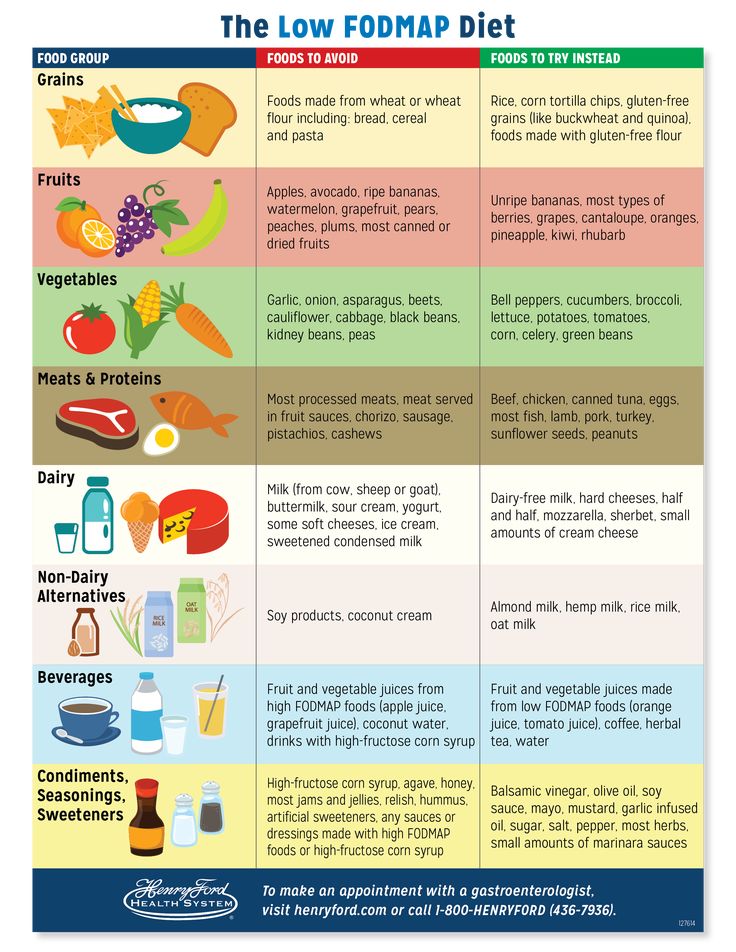Indian style baby food
Baby food recipes - 6 to 18 months
By Swasthi on August 26, 2022, Comments, Jump to Recipe
Baby food recipes – A collection of homemade Indian baby food recipes for 6 10 18 months babies. If you are a new mum, you can check this Baby food chart for 6 months baby. If you have a baby older than 7 months then you can check this Indian baby food chart for 8 months & above. You can also take a look at the best foods to gain weight in babies & toddlers. This post contains a list of all Indian baby food recipes available on this blog.
I have also included a few sample baby food recipes in the recipe card. All the recipes are tried and tested and have been served for both my babies.
If your pediatrician has suggested you to start, then You can start with a single fruit, single veggie and then single grain. For more details please check this post on How to introduce solids to baby.
I highly recommend reading every line of the baby food posts on this blog as they can guide you extensively.
Baby food recipes – babies above 6 months
How to make baby rice cereal
Apple rice
Ragi porridge for babies
Apple Wheat porridge
Apple ragi (try ragi and apple separately first, then try together)
Khichdi for babies
Methi khichdi
Moong dal soup
Carrot almond baby food
Potato rice
Barley baby cereal
Sago carrot kheer for babies
Sabudana kheer for babies
Wheat cereal for babies
Soft idli recipe
Milk oats porridge
How to make ragi flour for babies
Oats porridge with vegetables (blend till smooth)
Sweet potato rice
Apple oats
Babies above 8 months
Sprouts soup
Urad dal khichdi
Raw banana rice
Ven pongal. please mash the rice well and remove the pepper corns. You can also puree it.
Curd rice. Puree if desired, skip tempering.
Curd oats
Moong dal halwa
Ragi idli
Baby food recipes for babies above 11 months
These need to be pureed before serving
Dalia khichdi
Oats vegetable khichdi
Sweet corn soup
Barley soup with vegetables
Chickpeas toddler food
Chickpeas soup (for babies above 15 months)
Badam milk.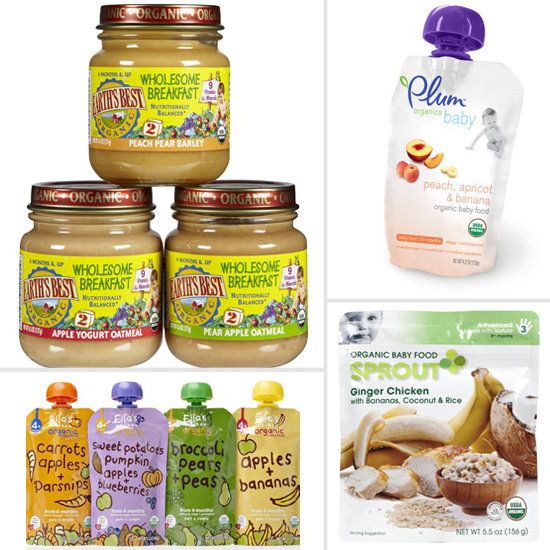 pls consult your doctor and use buffalo or goat milk, avoid cow’s milk.
pls consult your doctor and use buffalo or goat milk, avoid cow’s milk.
Set dosa
Banana milkshake
Lassi (avoid salt and sugar)
Neer dosa
Kambu dosa
Sample Indian baby food recipes
Prep Time10 minutes
Cook Time20 minutes
Total Time30 minutes
Servings2
AuthorSwasthi
Ingredients for 6 months baby food recipes 1 – Any one of the following (refer notes)
- ▢ ½ banana
- ▢ 1 sapota
- ▢ ½ papaya
- ▢ 2 tbsp cooked rice
Ingredients for 7 to 8 months baby food recipes 2 (refer notes)
- ▢ 2 tbsp rice or 2 tbsps ragi or wheat flour
- ▢ 200 ml water
- ▢ 1 small apple or banana
- ▢ 1/8 tsp ghee homemade (refer notes)
Ingredients for 8 months baby food recipes 3
- ▢ 1½ tbsp rice aged rice
- ▢ 1½ tbsp dal (toor or moong dal)
- ▢ 1½ tbsp carrots chopped
- ▢ 200 ml water
- ▢ 1/8 tsp ghee homemade
Ingredients for 8 months baby food recipes 4
- ▢ 2 tbsp rice
- ▢ 1 baby potato or 2 tbsp chopped
- ▢ 1 pinch carom seeds powder (ajwain powder)
- ▢ ¼ tsp ghee homemade
Making 6 months baby food recipes
- ▢
Make sure you follow the 3 day test rule for every food you introduce.
 Wait for the results until 4th day.
Wait for the results until 4th day. - ▢
To make the baby food, Mash any one of the fruits – banana, papaya, sapota very well until smooth.
- ▢
If desired add it to a blender and puree until smooth. To thin down add a few spoons of boiled and cooled water. Fruit puree is ready.
- ▢
If using cooked rice, then puree together rice and any of the fruit – (banana, papaya, sapota or steamed apple) along with some boiled and cooled water. Fruit flavored rice is ready.
- ▢
You can also feed only steamed apple. Peel and chop the apples. Bring half cup water to a boil and add the apples to it.
- ▢
Cook until the apples are slightly tender just for a minute or 2. Cool and puree with rice or just the steamed apple. Apple puree is ready.
Making 7 months baby food recipes
- ▢
Wash rice and soak in water for at least 30 mins.
- ▢
Pressure cook on a medium flame for 2 to 3 whistles.
 You can also cook in a pot until soft.
You can also cook in a pot until soft. - ▢
Apple flavored rice cereal : When the pressure goes down, open the lid and add grated apple. Cover and cook for 2 to 3 mins. Cool and make a smooth puree. If needed add some boiled and cooled water. Add few drops of hot ghee. Apple flavored rice is ready.
- ▢
Banana rice cereal : Cool the rice completely. Add banana and rice to a blender and make a fine puree. Pour few tbsps boiled and cooled water if desired.
Making 8 months baby food recipes
- ▢
Wash rice and dal in a cooker or pot a few times until the water runs clear. Add grated carrots and pour water.
- ▢
Pressure cook for 2 to 3 whistles on a medium heat. If cooking in a pot add more water as needed.
- ▢
When the pressure goes down, using a masher mash the food to smooth. This is the stage you must be teaching you baby to eat mashed foods. Reduce feeding pureed foods. Add ghee to hot food and serve warm.
 Rice dal baby food is ready.
Rice dal baby food is ready.
Making 8 months baby food recipes
- ▢
Soak rice until water runs clear. Soak for 30 mins and cook along with potato until soft for 3 whistles. Mash the rice well and add ghee. Feed warm. To prevent colic you can add a pinch of ajwain powder. Potato rice is ready.
The nutrition values are only for the banana flavored rice. These are approximations only.
Please follow 3 day wait rule for every food you introduce.
Alternative quantities provided in the recipe card are for 1x only, original recipe.
For best results follow my detailed step-by-step photo instructions and tips above the recipe card.
Nutrition Facts
Baby food recipes
Amount Per Serving
Calories 45
% Daily Value*
Potassium 105mg3%
Carbohydrates 10g3%
Sugar 3g3%
Vitamin C 2.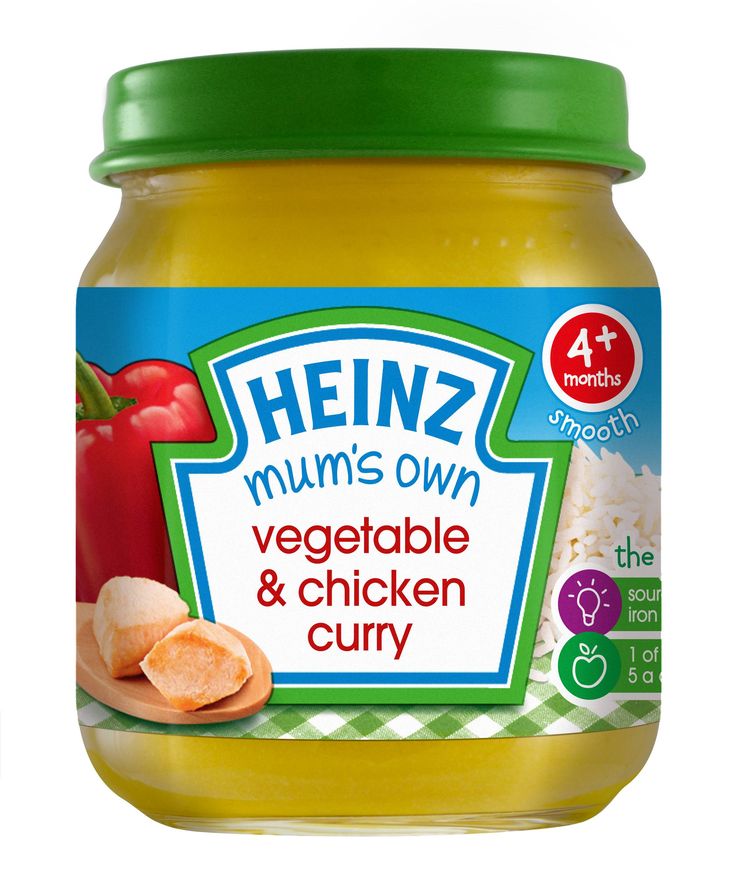 6mg3%
6mg3%
* Percent Daily Values are based on a 2000 calorie diet.
Tried this recipe?Mention @SwasthisRecipes or tag #swasthisrecipes!
© Swasthi’s Recipes
step by step
About Swasthi
I’m Swasthi Shreekanth, the recipe developer, food photographer & food writer behind Swasthi’s Recipes. My aim is to help you cook great Indian food with my time-tested recipes. After 2 decades of experience in practical Indian cooking I started this blog to help people cook better & more often at home. Whether you are a novice or an experienced cook I am sure Swasthi’s Recipes will assist you to enhance your cooking skills.
Follow Swasthi’s Recipes
Email sign up to receive awesome Swasthi’s Recipes in your inbox *
Popular Recipes
Featured Recipes
Baby Dal Khichdi (Lentils for Baby)
Baby Dal Recipe that’s 100% vegetarian, gluten-free and can be made vegan if you choose to.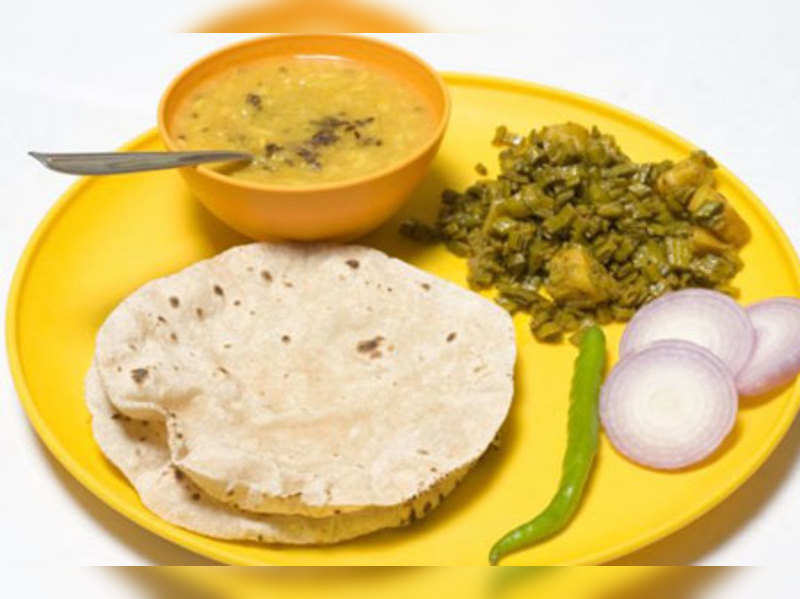 Make creamy, delicious, healthy and nutrient-rich lentil baby food at home for different stages – 0 to 4. The satisfaction & joy of feeding your baby homemade food is immense because it is clean & fresh with no additives. In this post I share how to cook dal or lentils for your baby along with plenty of time-tested tips to easily transition from smooth lentil puree to textured lentils and then to grown-up lentil food like this Dal Fry.
Make creamy, delicious, healthy and nutrient-rich lentil baby food at home for different stages – 0 to 4. The satisfaction & joy of feeding your baby homemade food is immense because it is clean & fresh with no additives. In this post I share how to cook dal or lentils for your baby along with plenty of time-tested tips to easily transition from smooth lentil puree to textured lentils and then to grown-up lentil food like this Dal Fry.
So after reading this post you will know how to introduce lentils to your baby, without being bloated or having any tummy issues.
About Baby Dahl
Lentils known as Dal or dahl is a staple in the Indian homes. Our regular meals include some or the other kind of lentils for almost every meal. But unfortunately your baby cannot eat the lentils you make for the grow-ups for the simple reason, baby dal should be devoid of salt, spices and oil.
So traditionally Indians follow a specific lentil diet for babies and is so much different from the grown-up version. Since babies are born with colic, it is very important to introduce lentils to baby with caution. Else both the mom and the baby end up with sleepless nights as lentils can cause stomach gas and colic.
Since babies are born with colic, it is very important to introduce lentils to baby with caution. Else both the mom and the baby end up with sleepless nights as lentils can cause stomach gas and colic.
Traditionally a lot of Indians follow the Ayurvedic diet for the baby food. So all the suggestions in this post are time-tested not only by me for my babies but also by zillion Indian families.
Which Dal to use for Baby
Moong Dal is the most commonly used lentil for babies in North India and Toor dal is most commonly used in South India. A lot of South Indians following the ayurvedic diet also use moong dal. Because Moong dal is considered to be Tri-doshic meaning it can balance any kind of imbalances in the body and improve the health. Moong dal is also considered easy for digestion.
If you are new to identifying the lentils, I have a picture here. Moong dal are known as yellow split and skinned petite lentils or yellow mung dal.
Here is a picture of the toor dal known as split pigeon peas or tuvar dal.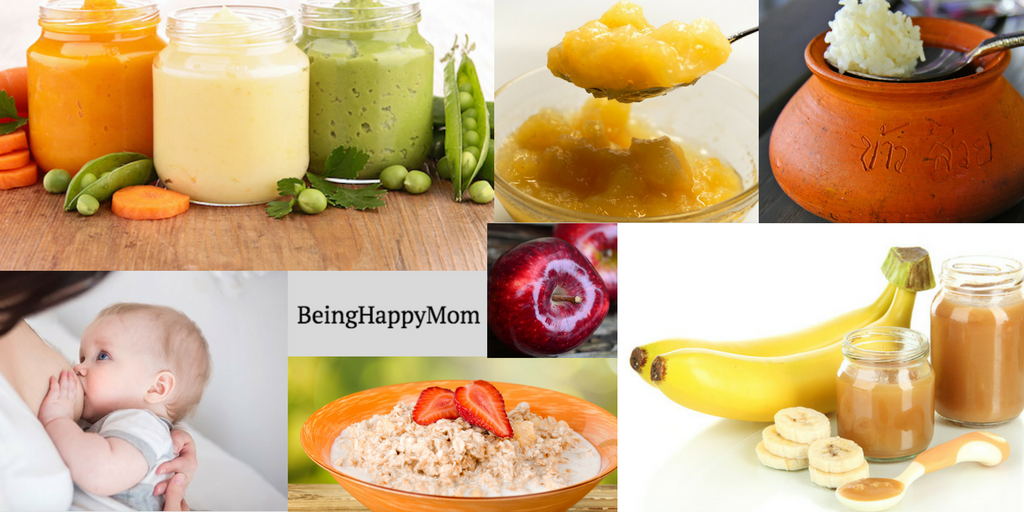 Red lentils, chana dal and black dal are not used for babies as a first food because they can easily cause stomach gas.
Red lentils, chana dal and black dal are not used for babies as a first food because they can easily cause stomach gas.
How to Introduce Dahl to Baby? (Stage 0 to 4)
Please consult your pediatrician before you introduce your baby to solids. The best time to introduce is different across the globe and depends on the region and culture.
Stage 0 Lentil Baby Food: A lot of homes, cook lentils and strain the stock (lentil cooked water). This is cooled and fed to the baby before noon, without adding anything. This works in 2 ways – one is to check if the baby does well with lentils and the second is to get the baby used to the flavor of lentils.
For this a 3 day wait rule is followed to make sure the baby does not have any reaction, colic or indigestion. This is a stage 0 (Zero) lentil baby food and a 6 months old baby will be able to consume only a few teaspoons of this.
Stage 1 Baby Dal (8 Months): Later at this stage, we cook the lentils and rice together for a breakfast or mid-day meal. You can add easily digestible veggies like pumpkin or carrots to make a stage 1 lentil baby food.
You can add easily digestible veggies like pumpkin or carrots to make a stage 1 lentil baby food.
At this stage avoid using vegetables that can potentially cause gas like potatoes, cauliflower, broccoli and sweet potatoes. You will also keep the quantity of dal less and rice more. You will mash the food completely or puree in a blender at this stage to get a puree like texture. Add a few drops of Cultured Ghee and not the other.
Note that you should have already introduced ghee, rice and the vegetables individually that you want to add here. Ideally at this stage we use a ratio of 1:4 (dal:rice).
Stage 2 (9 to 10 months) : At stage 2 you will increase the quantity of dal and more veggies. You can also introduce toor dal at this stage if you want. More kind of veggies like , bottle gourd and ridge gourd are also used.
This extra veggies give more texture to the baby lentil food. Also you may include spices like black pepper (during colder days), turmeric (a pinch) and carom seeds powder (ajwain for digestion) at this stage.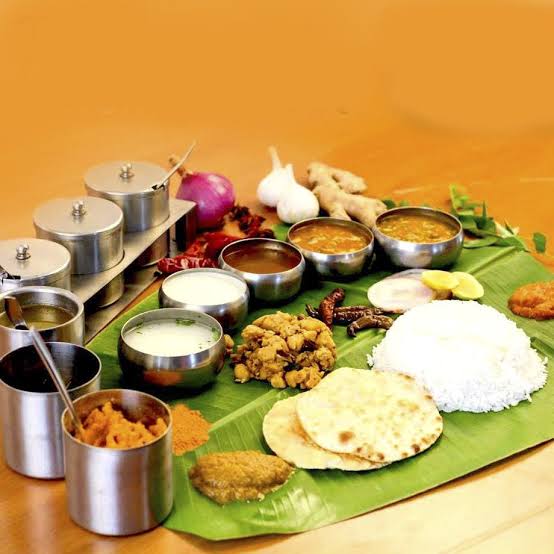 All these are optional.
All these are optional.
Stage 3 (11 to 12 months) : You will only increase the quantity of meal including ghee. Leafy greens life spinach, fenugreek can also be used. A lot of Indian also introduce Rasam and Sambar at this stage (low spiced/heat versions). I would make a no chilli version of these for my babies.
Stage 4 (after 12 months): Is a more textured meal where you will only soft cook the food and leave it to chunks so your baby begins to enjoy the texture of lentils, rice and veggies. At this stage we use 1: 1 ratio of dal and rice
Ways to cook Lentil Baby Food
The easiest way to make dal for your baby is in a pressure cooker – stovetop or electric cooker as this gives you the option to go with hand-free cooking.
In the step by step pictures I have shown how to make it in a cooker. Here is how to cook in a pot without a cooker.
- Soak half cup lentils for at least 1 hour up to overnight, as this helps in cooking them faster.
 You are free to skip this but your baby will be able to digest the soaked and cooked lentils easily.
You are free to skip this but your baby will be able to digest the soaked and cooked lentils easily. - Rinse the lentils well after soaking and pour 2 cups of fresh water. Bring it to a rolling boil and simmer. Cook uncovered until tender. You will see a lot of froth, remove that with a slotted spoon and discard.
- When the lentils turn tender, Strain the stock and cool it. This gives you stage 0 dahl for your baby.
- To make the baby food for other stages, you simply add the other ingredients as mentioned in the recipe card and cook.
Pro Tips
Never introduce your baby to lentils in the later part of the day. According to Ayurveda, it is believed that digestion is best during the first half of the day (before noon) and it is sluggish in the later part. So we always feed lentils for breakfast or lunch. This clears up the lentils in the tummy by night, before you get your baby to bed.
Avoid introducing any other new food to your baby while you introduce the lentils. The reason being you won’t know which food has caused the trouble (in case).
The reason being you won’t know which food has caused the trouble (in case).
Also note that it is essential to test every single food for 3 days before you cook a meal with all of them. Go slow!
More baby food recipes,
Sweet Potato Baby Food
Carrot baby food
Indian baby food
Ragi malt
Wheat cereal
How to Cook Dal for Baby (Stepwise photos)
1. Wash rice and dal together at least twice in lot of water. Optionally soak them for at least 30 to 60 minutes with 1 cup water in a small pressure cooker or pot. I use a 3lts pressure cooker.
2. Just before you cook, chop or grate veggies freshly and add to the soaked rice and dal.
3. On a medium heat pressure cook for 2 whistles. If you do not have a cooker, bring the water to a rolling boil and turn down the heat to low. Simmer until the lentils and rice are tender. If you find any froth, discard that with a slotted spoon.
4. When the pressure reduces , open the lid and check. The rice, lentils and veggies must be soft and mushy. While the rice is still hot, mash it to smooth with a spoon or a masher.
The rice, lentils and veggies must be soft and mushy. While the rice is still hot, mash it to smooth with a spoon or a masher.
5. Add ghee, a pinch of crushed pepper and turmeric if you want. Babies need healthy fat, we use ghee. You can add salt after 1 year.
6. Mix everything well. If the consistency is too thick, pour some boiling hot water. Avoid adding cold water. Serve lentil rice warm. Warm foods digest better.
How to Make Stage 4 Lentil Baby Food
Babies over an year tend to become picky or choosy and love textured foods rather than smooth purees. So you can slowly move to veggies like onion, green peas, cauliflower, carrots, capsicum, methi, palak, beets etc. You can also make this moong dal recipe and serve with plain mashed rice.
1. Soak rice and dal for at least 30 minutes. Heat ghee and saute cumin. Add grated ginger and saute. It will begin to smell good.
2. Add veggies and saute again for 2 minutes.
3. Add rice and dal. Repeat sautéing for 2 mins.
4. Add salt and water as needed.
5. Close the pressure cooker and allow to whistle once or twice depending on the brand.
If desired you can mash it further before serving.
Recipe Card
Prep Time5 minutes
Cook Time20 minutes
Total Time25 minutes
Servings1
AuthorSwasthi
Stage 0
- ▢ ¼ cup moong dal or toor dal
- ▢ 1¼ cup water
Stage 1
- ▢ ¼ tablespoon moong dal (or 1 tablespoon cooked plain dal)
- ▢ 1 tablespoon uncooked rice (or 3 tablespoons cooked rice)
- ▢ ¾ cup water (or as needed)
- ▢ 2 inch carrot or pumpkin
- ▢ 1 drop ghee (optional)
Stage 2
- ▢ 1 tablespoon moong dal (or 3 tablespoon cooked plain dal)
- ▢ 2 tablespoon uncooked rice (or 6 tablespoons cooked rice)
- ▢ 3 inch carrot (3 tbsps chopped) or pumpkin, ridge gourd, bottle gourd
- ▢ 1 cup water (more to adjust)
- ▢ 2 drops ghee (optional)
Stage 3
- ▢ 1½ to 2 tablespoon moong dal or tuvar dal (Refer the introduction)
- ▢ 2 to 2½ tablespoon uncooked rice
- ▢ 1¼ to 1½ cup water (more to adjust)
- ▢ 3 tablespoon carrots , peas, pumpkin, spinach, fenugreek etc
- ▢ ⅛ teaspoon ghee melted
- ▢ 1 pinch turmeric (optional)
- ▢ 1 pinch black pepper (optional)
- ▢ ⅛ teaspoon ajwain powder (optional)
Stage 0 – Lentil baby food
- ▢
Rinse and soak lentils for an hour , up to over night.
 Drain and rinse well. Pour fresh water and bring to a rolling boil.
Drain and rinse well. Pour fresh water and bring to a rolling boil. - ▢
Turn down the heat and simmer until the lentils are tender & mushy. Discard any froth that comes to the top while cooking.
- ▢
Strain the lentils and cool completely. Feed a few teaspoons of this stage 0 lentil baby food. You can freeze this stock or refrigerate for 2 days.
Stage 1 to 3
- ▢
Wash and soak rice and dal together for at least 30 to 60 minutes with 1 cup water. Later drain and pour fresh water.
- ▢
Add chopped or grated vegetable to the soaked rice & dal.
- ▢
Pressure cook on medium flame for 2 whistles. To cook in a pot check my step by step photo guide in the post.
- ▢
When the pressure drops, open and mash the rice to smooth while still hot.
- ▢
Add ghee, spice powders and turmeric if you want. (for stages 2 to 3)
- ▢
Mix well, to bring it to right consistency, if needed add very little hot boiling water and mix.
 Do not mix cold water it will change the taste of the dal.
Do not mix cold water it will change the taste of the dal.
- You can also make stage 1 to 4 baby food if you have precooked rice, lentils and vegetables ready separately from other meal. Simply use the quantities mentioned in the ingredient notes and combine them – puree or mash or mix well. But use hot foods and not cold.
- All the recipes are tried and tested for my babies.
Alternative quantities provided in the recipe card are for 1x only, original recipe.
For best results follow my detailed step-by-step photo instructions and tips above the recipe card.
Nutrition Facts
Baby Dal Khichdi (Lentils for Baby)
Amount Per Serving
Calories 159 Calories from Fat 18
% Daily Value*
Fat 2g3%
Saturated Fat 1g6%
Cholesterol 6mg2%
Sodium 48mg2%
Potassium 108mg3%
Carbohydrates 28g9%
Fiber 2g8%
Protein 4g8%
Vitamin A 335IU7%
Vitamin C 6. 8mg8%
8mg8%
Iron 0.9mg5%
* Percent Daily Values are based on a 2000 calorie diet.
Tried this recipe?Mention @SwasthisRecipes or tag #swasthisrecipes!
© Swasthi’s Recipes
Dal Baby Food Recipe first published in August 2014. Updated in August 2022.
trends in baby food packaging
Baby food belongs to the essentials - it is supplied in special packaging that meets many requirements: the safety of the product and its taste, detailed information about the composition and possible allergic reactions. When developing the design and functionality of packaging, it is important to take into account the interests of the target audience - these are parents and children from the age of one who can already express their reactions and attitudes towards the product. Nikolay Artamonov, founder and creative director of Otlichnosti, considered several approaches to category design.
Snacks
Minimalist bright and light packages with salivary design can be considered a classic approach. Communication is aimed at basic instincts - "Your child will be very tasty." Unusual flavor combinations also stimulate the desire to try the product.
Suitable for consumers of all ages, Applesauce Adventures Organic Applesauce comes in three flavors: Spicy Apple, Straight from the Tree, and Sweet as Apple Pie. Applesauce is packaged in a squeezable bag, which allows you to eat it right away or squeeze it into a separate container.
The Applesauce Adventures
Cherub Food jars are packed with a focus on aesthetics, with each plump glass jar featuring a minimalist label featuring a cartoon mouth with a tongue.
Cherub Food, Me + James Studio
With their simple, modern look, Cherub Food jars are eye-catching and show that only the most essential ingredients are used in the formula. Designed by Me + James Studio.
Cherub Food
Healthy products for an anxious audience
Parents are the most anxious target audience. The most important indicator for them is the usefulness of the products that they give to their babies.
The most important indicator for them is the usefulness of the products that they give to their babies.
Windows and fully transparent packaging detailing the ingredients and how they are processed are used by baby food designers to convey core brand values.
UK startup Keep It Real Baby makes nutritious, clean, organic baby food that is as close to homemade as possible. The Love Mondays packaging design is inspired by the core values of the brand: be honest, stay playful, stay inclusive, and keep inspiring.
Inspired by children's books, the designers hand-created textures and paper-cut illustrations that perfectly fit the idea of fair and fun food.
Horizon is a tribute to farm to fork with the highest quality ingredients. All this is balanced with a very clean and modern branding and color coding to make it stand out on the shelf as much as possible.
Functional bonuses
When the product itself is already useful and tasty, the functional advantages of packaging of a particular brand come into play. Convenient doypacks for feeding outside the home, mini-spoons, tight lids in case the child has not finished eating, as well as kitchen “gadgets” for making mashed potatoes on your own.
Convenient doypacks for feeding outside the home, mini-spoons, tight lids in case the child has not finished eating, as well as kitchen “gadgets” for making mashed potatoes on your own.
Little Spoon first introduced itself to parents as a healthy baby food brand that produces baby food formulas for different ages that prioritize freshness. With subscription and delivery options, parents choose the meal plan that best suits their schedule and their child's needs, as well as fresh, organic baby food once every two weeks.
Little Spoon
The brand has also taken care to include a small ergonomic spoon in each package, as the company believes it is important for children to learn to eat on their own and develop healthy eating habits from an early age.
Baby Garden Glaciers freezer trays from Cardboard Helicopter Product Design allow parents to save time and waste when preparing food.
Baby Garden Glaciers, Cardboard Helicopter Product Design
Each tray comes with six separate baby food containers that parents can store their baby food in advance. On the lids of these capsules, you can make inscriptions with markers - to comply with the shelf life.
On the lids of these capsules, you can make inscriptions with markers - to comply with the shelf life.
Baby food manufacturer Plum Organics solved the problem of feeding children on the road - for this, the company turned to the IDEO agency.
Plum Organics, IDEO
The designers have developed transparent containers - a resealable lid makes it easy for parents to store food between feedings, and the container has a feature that allows them to keep track of the day they opened the package to make sure they don't throw away the unspoiled food food.
The new pack is easy and safe to stack and has a recess in the lid for parents to place a spoon, making feeding neat and hygienic.
Plum Organics, IDEO
Creative for kids and their moms
Today's parents are yesterday's millennials. In addition to the benefits, taste, environmental friendliness and functionality of the packaging, they appreciate the creative approach in design, which is unusual for the category.
The Latin Baby is a Florida-based brand that caters to the needs and preferences of millennial parents. Unlike classic brands that have been on the market for more than a year, the company uses superfood ingredients and decorative packaging.
The Latin Baby
The Latin Baby is designed with young Hispanic customers in mind. The brand can reach out to consumers using ingredients such as calabash, which are traditionally used in Latin American cuisine. The brand also eschews sugar and sweet fruits and opts for zesty spices instead.
Constructors
Startup Raised Real offers a subscription to baby food and a machine for making it. All food is organic and the menu is curated by one of the co-founders, who holds a PhD in nutrition and is a Registered Dietitian.
Raised Real / Behance
This is a pre-portioned meal that does not come pre-mixed. Instead, the company offers a machine that first steams food and then mixes it.
As we have seen from the selection of cases, baby food may be preferred by the target audience not only because of the price category and the compliance of the basic ingredients. Functionality and playfulness, demonstration of product freshness, the need for aesthetics - these tasks are successfully implemented with the help of packaging design.
Functionality and playfulness, demonstration of product freshness, the need for aesthetics - these tasks are successfully implemented with the help of packaging design.
Special meals | Air France
Meals for medical reasons If you have a special diet for medical reasons, you can order one of the following meals:
If you follow a special meal plan, you can order special meals up to 24 hours before flight departure, except for kosher meals, which must be ordered at least 48 hours in advance. Attention: in Business class on flights to Algiers, Amman, Athens, Bucharest, Casablanca, Yerevan, Istanbul, Kyiv, Marrakech, Moscow, St. Petersburg, Sofia, Stockholm, Tunisia, Tel Aviv and back, only vegetarian meals are offered nutrition.
Already bought a ticket? Order your special meal now.
This meal is free of the following ingredients and their derivatives: gluten-containing cereals, shellfish, eggs, fish, peanuts, soybeans, milk, inshell nuts (almonds, walnuts, hazelnuts), celery, mustard, sesame seeds, sulfur dioxide and sulfites in concentrations exceeding 10 mg/kg, lupins and shellfish.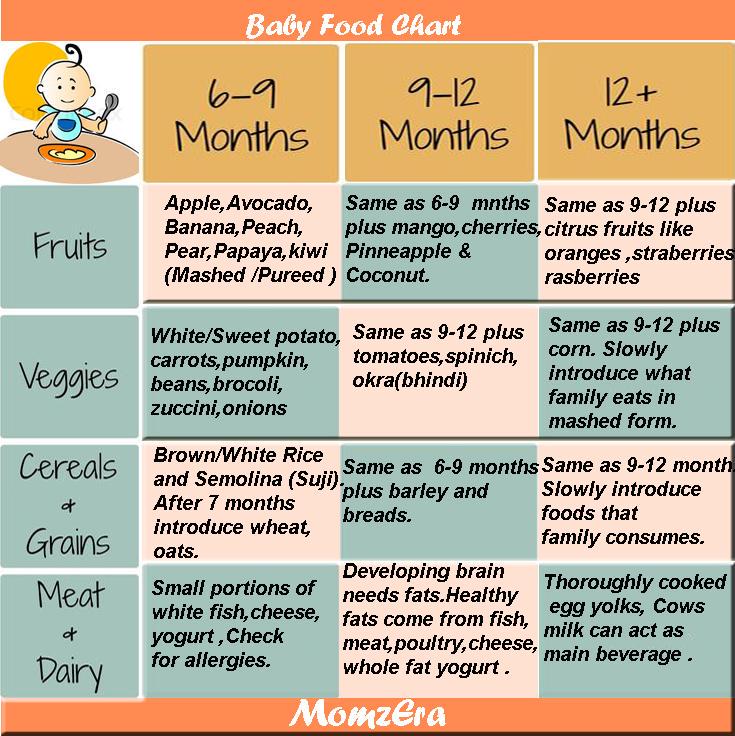 If you are allergic to foods not listed above, please bring your own cold pack.
If you are allergic to foods not listed above, please bring your own cold pack.
This food does not contain spicy, fatty, salty or alcoholic foods and certain vegetables that can cause irritation.
This food does not contain sugar or high glycemic products.
This food does not contain any products based on gluten or products that might contain it.
All types of salt are missing from this food: cheese, smoked meat and fish, sausages, seasonings with salt, crackers.
Recommended for vegan passengers: meals based on vegetables, fruits and grains. This food does not contain animal products, including eggs, dairy products and honey.
Recommended for vegetarian passengers: food based on vegetables, fruits, cereals, dairy products, eggs and honey. This food does not contain meat of animals, birds, fish, crustaceans, as well as gelatin and rennet.
Recommended for Indian-style vegetarian passengers: meals based on vegetables, fruits, cereals, dairy products and honey. This food does not contain meat of animals, birds, fish, crustaceans, as well as gelatin and rennet.
This food does not contain meat of animals, birds, fish, crustaceans, as well as gelatin and rennet.
Recommended for Muslim passengers. Food of animal origin from animals slaughtered in accordance with Islamic rules. This food does not contain pork or pork derivatives (including gelatin), beverages or alcohol-based products.
Recommended for Jewish passengers. This food is prepared according to the prescriptions of Judaism under the supervision of a rabbi.
Recommended for passengers wishing to order an Indian style meal without pork or beef. This food does not contain pork, beef and their derivatives (including gelatin and rennet).
Recommended for the youngest passengers aged 6 months to 2 years. This simple and light food contains minced foods in the form of mashed potatoes. It does not contain sausages and confectionery, spices and small products (nuts, etc.).
Recommended for children from 2 to 8 years old. Designed with children's tastes and preferences in mind.




